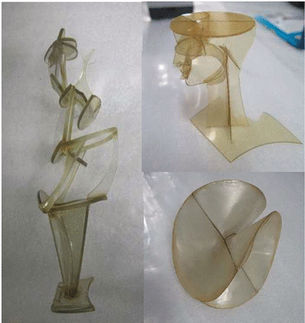Earwax: A new frontier of human odor information
Odor-producing chemicals in earwax differ according to ethnic origin
Scientists from the Monell Center have used analytical organic chemistry to identify the presence of odor-producing chemical compounds in human earwax. Further, they found that the amounts of these compounds differ between individuals of East Asian origin and Caucasians. The findings suggest that human earwax, an easily obtained bodily secretion, could be an overlooked source of personal information.
"Our previous research has shown that underarm odors can convey a great deal of information about an individual, including personal identity, gender, sexual orientation, and health status," said study lead author George Preti, PhD, an organic chemist at Monell. "We think it possible that earwax may contain similar information."
Earwax, scientifically known as cerumen, is a mixture of secretions from specialized sweat glands with fatty materials secreted from sebaceous glands. It can have one of two physical types: a wet yellow-brown wax or a dry white wax.
Preti's interest in earwax was piqued by the finding that a small change in a gene known as ABCC11 is related both to underarm odor production and also to whether a person has wet or dry earwax.
Individuals of East Asian (e.g., Chinese, Korean and Japanese) and Native American descent have a form of the ABCC11 gene that codes both for dry-type earwax and also for reduced underarm body odor relative to individuals of other ethnicities, who typically produce a wet-type ear wax and greater body odor.
To explore whether earwax has a characteristic odor, the researchers collected earwax from 16 healthy men: eight Caucasian and eight of East Asian descent. Each sample was placed into a vial, which was gently heated for 30 minutes to promote release of airborne molecules known as volatile organic compounds ( VOCs), many of which are odorous.
An absorbent device was then inserted through the vial's cap to collect VOCs from the closed containers, and gas chromatography-mass spectrometry techniques used to analyze the chemical compounds.
The analysis revealed 12 VOCs were consistently present in the earwax of all the men. However, the amount of VOCs varied as a function of the subject's ethnic background, with Caucasians having greater amounts of 11 of the 12 VOCs than East Asians.
"In essence, we could obtain information about a person's ethnicity simply by looking in his ears. While the types of odorants were similar, the amounts were very different," said study lead author Katharine Prokop-Prigge, a Monell chemist.
The researchers suspect that the fatty nature of earwax makes it a likely repository for lipid-soluble odorants produced by certain diseases and the environment.
Prokop-Prigge points out that at least two odor-producing metabolic diseases (maple syrup urine disease and alkaptonuria) can be identified in earwax before they can be diagnosed using traditional techniques such as blood and urine analysis.
"Odors in earwax may be able to tell us what a person has eaten and where they have been," said Preti. "Earwax is a neglected body secretion whose potential as an information source has yet to be explored."
Other news from the department science
Most read news
More news from our other portals
See the theme worlds for related content
Topic world Gas chromatography
Gas chromatography is an essential method in analytical chemistry for the separation and analysis of volatile compounds. Due to its high resolution and sensitivity, it has become firmly established in areas such as environmental analysis, food chemistry or forensic science. GC provides precise and reliable results and enables deep insights into the chemical composition of samples.

Topic world Gas chromatography
Gas chromatography is an essential method in analytical chemistry for the separation and analysis of volatile compounds. Due to its high resolution and sensitivity, it has become firmly established in areas such as environmental analysis, food chemistry or forensic science. GC provides precise and reliable results and enables deep insights into the chemical composition of samples.





























































